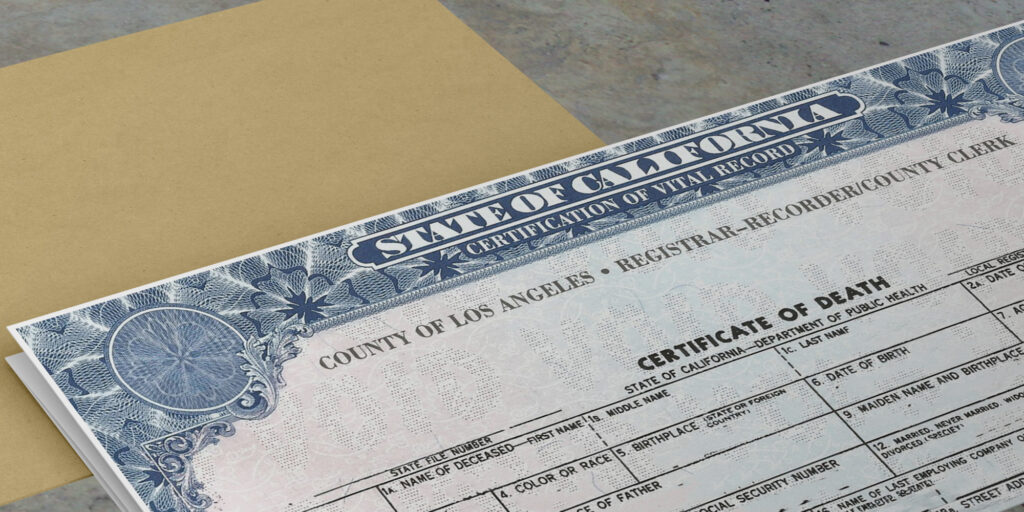A death certificate is a vital record issued by the government to officially document the death of an individual. This document plays a critical role for both legal and personal purposes, such as settling estates, claiming insurance, and establishing a death for genealogical records. However, the information featured on a death certificate can vary depending on the state where it is issued. Below, we explore the typical elements included on a death certificate, the variations you might encounter, and the differences between long and short forms of the document.
Table of Contents
- Standard Information Found on a Death Certificate
- How Death Certificate Information Varies by State
- Differences Between Long and Short Forms of Death Certificates
- Why Understanding State-Specific Requirements Matters
- How to Obtain a Death Certificate
- Conclusion
Standard Information Found on a Death Certificate
Regardless of the state, most death certificates include the following key details:
- Personal Details of the Deceased:
- Full name (including maiden name, if applicable)
- Date of birth
- Place of birth
- Gender
- Race or ethnicity (in some states)
- Social Security number (may be included, redacted, or omitted depending on the state)
- Details of Death:
- Date and time of death
- Place of death (e.g., hospital, residence, or other location)
- Manner of death (natural, accidental, homicide, suicide, or undetermined)
- Certifying Information:
- Name and signature of the attending physician or medical examiner
- Date of certification
- State or local registration number
- Family Information:
- Marital status at the time of death
- Name of spouse (if applicable)
- Names of parents (including mother’s maiden name)
- Burial or Disposition Details:
- Place of burial, cremation, or other disposition
- Name of the funeral home or director
How Death Certificate Information Varies by State
Each state has its own regulations and formatting for death certificates, leading to slight variations in the details included. Here are some common differences:
- Additional Personal Details: Some states, like California, may include occupation, highest level of education, or military service details.
- Cause of Death Reporting: States like New York provide more detailed categorizations of contributing causes of death, while others may use broader terms.
- Social Security Number: Some states exclude or redact the Social Security number for privacy reasons, while others include it fully. This variation can affect how the certificate is used for legal and financial purposes.
- Language and Formatting: States like Texas and Florida may issue bilingual death certificates in English and Spanish, whereas others only provide English versions.
- State-Specific Data: States like Alaska may include information about tribal affiliation for Native American individuals, reflecting the region’s demographics.
- Filing and Certification: The specific requirements for signing and certifying a death certificate may differ. For example, some states require the funeral director’s signature alongside the certifying physician’s.
Differences Between Long and Short Forms of Death Certificates
Death certificates are typically available in two formats: long form and short form. Each serves distinct purposes:
- Long Form Death Certificate:
- Includes all detailed information about the deceased and the circumstances of their death.
- Often used for legal purposes such as estate settlement, insurance claims, and official government filings.
- Contains sensitive details, such as the cause of death, which may not be necessary for all uses.
- Short Form Death Certificate:
- Provides a summarized version of the record, usually omitting sensitive information like the cause of death.
- Commonly used for less formal purposes, such as genealogical research or providing proof of death for non-legal matters.
When ordering a death certificate, it’s important to determine which version you need based on your specific requirements.
Why Understanding State-Specific Requirements Matters
It’s essential to be aware of these state-specific differences, especially when ordering a death certificate or using it for legal purposes. If you’re managing an estate or handling government documentation, inaccuracies or omissions can lead to delays.
How to Obtain a Death Certificate
To get a copy of a death certificate, you’ll typically need to contact the vital records office in the state where the death occurred. Requirements for obtaining this document also vary by state but usually include:
- Proof of identity
- Relationship to the deceased
- Reason for the request
- Payment of a fee
You can expedite this process by using trusted services like Vital Records Online, which simplifies ordering certified copies of death certificates from any state. Visit the official CDC Vital Records page (CDC Vital Records) for additional state-specific details and resources.
Find detailed instructions on ordering a death certificate here.
Conclusion
Death certificates are essential documents that provide critical details about an individual’s life and passing. While they share many common features, the specifics can vary significantly depending on the state. Additionally, understanding the differences between long and short forms ensures you request the right version for your needs. If you need help acquiring a death certificate, Vital Records Online offers a fast and secure way to get the documentation you need.
For more information about death certificates and other vital records, visit the Vital Records Online blog. You can also explore the National Archives (National Archives Vital Records) for historical and genealogical data related to death certificates.

